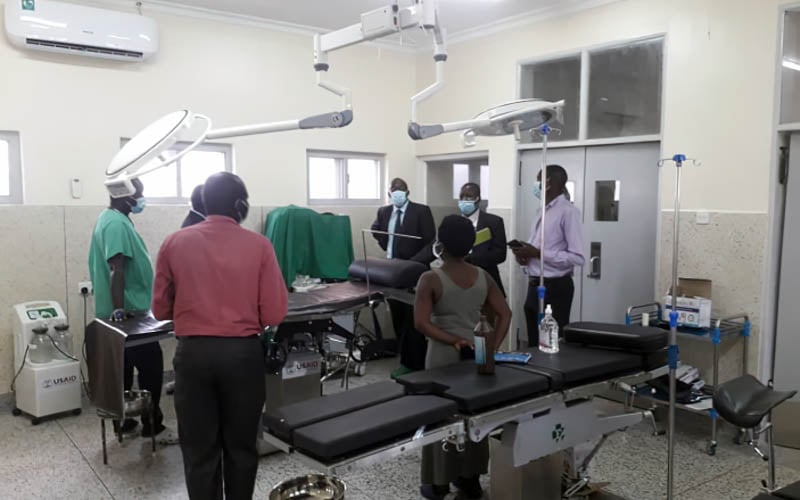This month, URC – with USAID/Uganda, the Uganda Ministry of Health (MOH), local district governments, and partners – celebrated the inauguration of the renovation and new construction of health facilities in the Pader and Kitgum districts of the Acholi sub-region of Uganda.
Working with the district local governments in Kitgum and Pader districts in the Acholi sub-region, the USAID Regional Health Integration to Enhance Services-North Acholi (RHITES-N, Acholi) Activity renovated the operating theaters of Pajule and Namokora Health Center IVs (HCIVs) and constructed new maternity blocks at Namokora HCIV and Ogom Health Center III (HCIII).
In addition to the RHITES-N, Acholi Activity managing the renovation and construction project, USAID/Uganda also provided funding to equip the newly renovated facilities with medical equipment and furnishings.
Expanding Facilities for Expanded Services
The World Health Organization estimates that 5-15% of all pregnancies will result in complications, most commonly around the time of labor and delivery. At every step, time is a critical factor to ensure the survival of a mother and her unborn baby. In Northern Uganda, accessible, safe, clean, and adequate health facility spaces are often not available for women who need them.
RHITES-N, Acholi aims to ensure every pregnant mother has a safe, clean delivery attended by a skilled health worker, and timely provision of essential newborn care in health facilities where deliveries take place.
Many mothers previously had restricted access to emergency obstetric care services in close proximity to their homes. Without an obstetric theater in Pajule, all emergency cases were referred to either Kitgum General Hospital or St. Joseph’s Hospital, 41.4 and 42.5 kilometers away, respectively. And in Namokora, the most readily available facility, health workers used the maternity block to care for premature babies, term babies, and mothers. The same space was used to provide antenatal care and family planning. Facility congestion due to patient volume compromised essential components of care, starting with basic hygiene practices.

The renovation and construction project has alleviated some of these barriers to care by increasing the availability of maternal and acute care services and improved facility capacity to provide basic and comprehensive emergency obstetric and newborn care services as follows:
- Pajule HCIV: Renovation of the operating theater, installation of a rainwater harvesting system with a 40,000 liter tank, construction of walkways, and a placenta pit to safely dispose of biomedical waste;
- Ogom HCIII: Renovation of the general ward and maternity ward and construction of a four-stall pit latrine and placenta pit; and
- Namokora HCIV: Renovation of the maternity ward and operating theater, installation of a rainwater harvesting system with a 40,000 liter tank, and construction of a generator house, walkways, and a placenta pit.
The RHITES-N, Acholi Activity anticipates that the expanded health facilities will improve access to quality health care for mothers, babies, and families in the region for years to come. “Our hope is that the increased access to facilities – and specifically emergency obstetric care – will help to prevent avoidable maternal death in the region,” says Linus Amandu, Director Health Systems Service Delivery for RHITES-N, Acholi.



